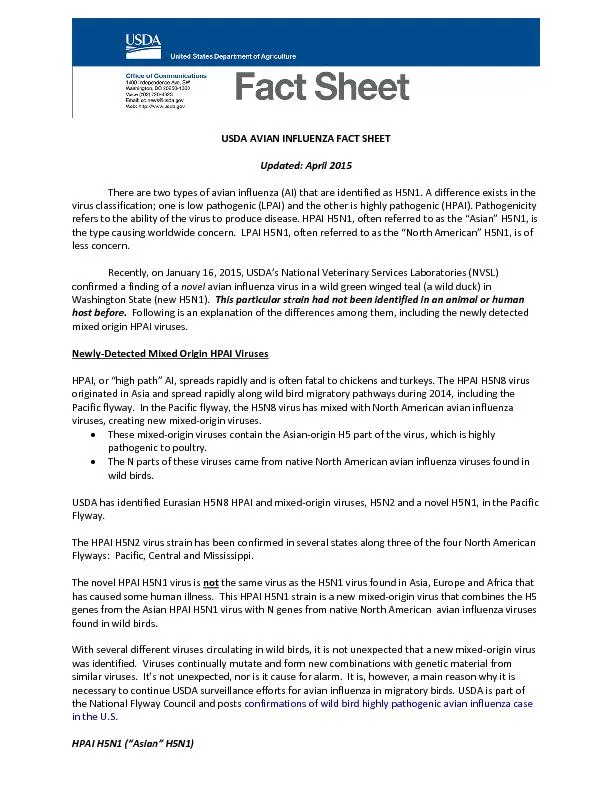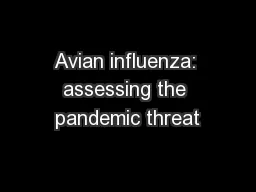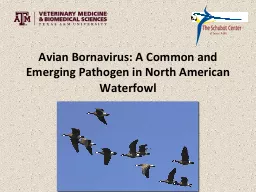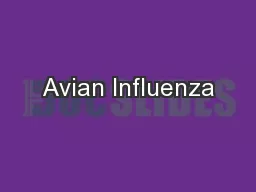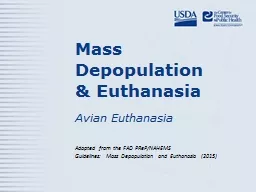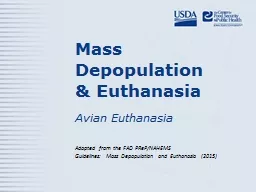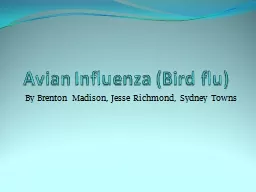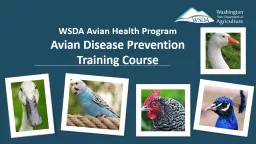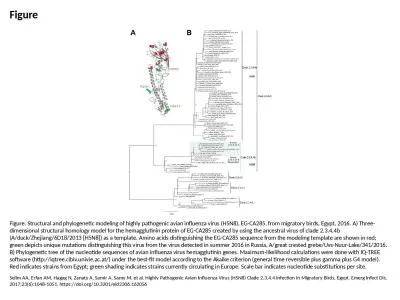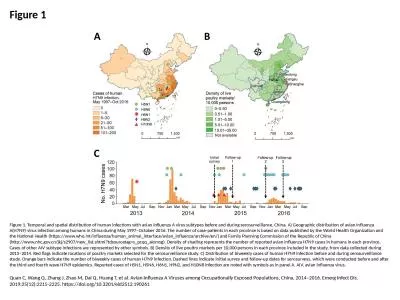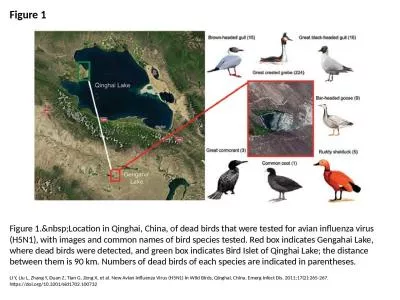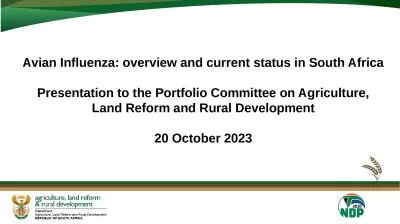PDF-USDA AVIAN INFLUENZAFACT SHEETUpdated: April 2015There are two types o
Author : pasty-toler | Published Date : 2016-10-11
Newly HPAI or 147high path148 AI spreads rapidly and is often fatal to chickens and turkeys The HPAI H5N8 virus originated in Asia and spread rapidly along wild
Presentation Embed Code
Download Presentation
Download Presentation The PPT/PDF document "USDA AVIAN INFLUENZAFACT SHEETUpdated: A..." is the property of its rightful owner. Permission is granted to download and print the materials on this website for personal, non-commercial use only, and to display it on your personal computer provided you do not modify the materials and that you retain all copyright notices contained in the materials. By downloading content from our website, you accept the terms of this agreement.
USDA AVIAN INFLUENZAFACT SHEETUpdated: April 2015There are two types o: Transcript
Download Rules Of Document
"USDA AVIAN INFLUENZAFACT SHEETUpdated: April 2015There are two types o"The content belongs to its owner. You may download and print it for personal use, without modification, and keep all copyright notices. By downloading, you agree to these terms.
Related Documents

